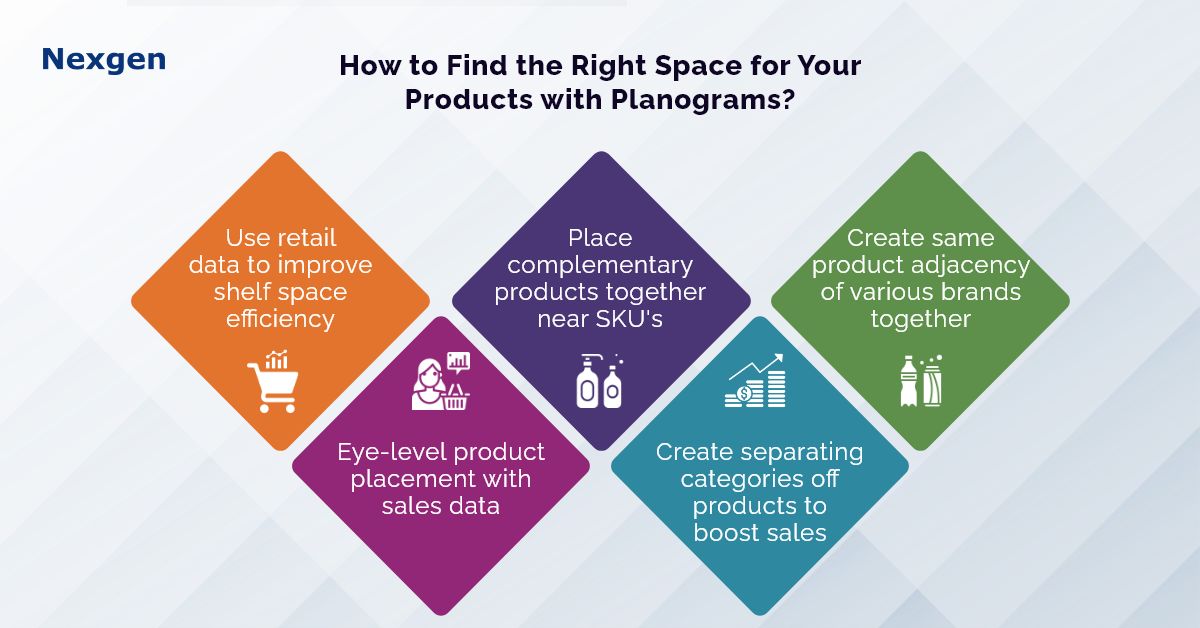Imagine, for example, that your customers are enjoying a new variety of noodles. The demand for these noodles suddenly grows high, and it doubles over a one-month period. Due to the lack of analysis, the noodles are kept on the bottom shelf of the store with a limited number of product facings. This, in turn, makes it difficult for other shoppers to find the product, resulting in huge sales loss.
Taking advantage of these opportunities can be difficult, however, this is one area where planogram software helps retailers efficiently use their retail data to improve shelf space efficiency. Planogram is a visual merchandising software, that brings retail data to life as per the shelf space efficiency to place products. Here are some planogram ways to find the right space for your brick-and-mortar storefront:

- Sequence of products: It refers to the sequence in which a brand’s products will be placed on store shelves. Most retailers want to place associated products together near their SKUs. For example, placing various beverage brands right next to each other in SKUs could help trigger impulse buying. Also, creating complimentary areas in the store like placing products like bread-and-butter side by side can cause shoppers to make complementary purchases.
- Create product adjacency: Retailers can create adjacency of the same product of various brands together in the aisle. For example, if one of ‘Brand A’ is skincare products, then ‘Brand B’ which is not popular for skincare products, places its skincare essentials adjacent to that of ‘Brand A.’ Product adjacency is an important part of visual merchandising, where one brand’s reputation is leveraged by another for proper shelf space allocation and sales.
- Eye-level product placement: Products that are placed at the shopper’s eye-level have a high probability of being purchased. Products can be placed at eye-level by considering the sales data. For instance, products associated with kids like candies and toys can be placed on the lower shelves where they can easily reach, where they are at eye level for kids. In such ways, retailers can place items in different categories based on shopper visibility.
- Separating categories off products: Retailers can create categories of items based on its price, brand, and size. For example, herbal soap is kept alongside regular soap. If we put these together, it does not cause major product differences. But stocking them separately gives the shopper an idea that something different is launched by the brand, and shoppers who are curious in nature will look upon the new products if they meet their requirements. This results in products being lifted off the shelf.
Overview of Nexgen POG
Nexgen POG is a robust and user-friendly cloud-based visual merchandising tool. It is designed for quick and efficient planogramming with minimal effort. Planograms can be designed by easily dragging and dropping the products. The multi-device compatibility feature of POG allows you to obtain, share and edit planograms on any device, including your phone. It helps in designing store-specific planograms for increased product visibility and sales.
Get Your Free Trial Now!